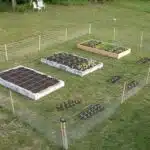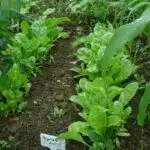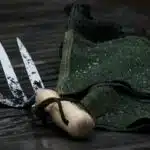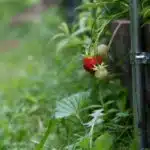It’s no secret that working the soil is a key part of gardening. But what tools can help you achieve the best results? According to a survey by the National Gardening Association, over 81 million households in the United States were involved in gardening activities in 2020. With so many people taking part, it’s obvious that having quality tools is essential for successful soil management.
In this article, we’ll reveal our top 10 tools for working the soil. Whether you’re a beginner or an experienced gardener, these products are designed to make your life easier and help you achieve better results. We’ll discuss their features, pros and cons and tell you which ones are best for which tasks. So read on to find out more about our top 10 picks!
From spades and forks to trowels and cultivators, there’s something for everyone when it comes to working the soil. Each tool has its own unique function and can make all the difference when it comes to preparing your garden beds or planting new seeds. With our guide, you’ll be able to choose the right tools for your needs and get started on your next project with confidence.
Spades
The spade — a tool of strength and determination, of hard work and dedication. With its sharp edge and sturdy handle, it is the perfect companion for any gardener. Imagine taking a spade to the soil, feeling the weight in your hands as you break through the earth, turning over clods of dirt in search of minerals and nutrients.
Spades come in different sizes, shapes and materials. They can be used for digging holes or trenches for planting trees or shrubs, creating beds for flowers and vegetables, or removing stubborn weeds from your garden. The design of the spade also makes it ideal for edging lawns or pathways. Whether you need a small spade to get into tight spaces or a larger one for digging deeper holes, there’s sure to be a spade that fits your needs.
No matter what kind of gardening job you have at hand, a spade will help make your life easier. From turning soil to uprooting weeds to edging paths, this powerful tool can do it all – making gardening more enjoyable while saving you time and energy.
Shovels
Shovels are the unsung heroes of the gardening world. Like a trusty sidekick, they lend a helping hand to any soil-related task. With their assistance, digging, planting and turning over beds becomes an effortless endeavor.
A shovel is an essential tool for any gardener’s toolkit. Its versatile design is perfect for scooping and lifting soil, or even tackling larger projects like creating new flower beds or paths. The curved blade aids in making short work of tough tasks with its wide surface area and sharp edges designed to cut through the ground effortlessly. In addition, it can be used to move large quantities of dirt quickly.
The ergonomic handles on most shovels make them comfortable and easy to use for extended periods of time, allowing you to get more done in less time. Whether it’s breaking up hard packed soil or moving heavy loads from one location to another, a good quality shovel will make light work of tough jobs.
Garden forks are another invaluable tool when it comes to working with the soil…
Garden Forks
Garden forks are an essential tool for any gardener. They’re great for loosening soil and breaking up clumps, and they’re also incredibly versatile. Their tines are perfect for digging small holes, planting seeds, transplanting small plants, and even weeding. With a garden fork in hand, you can get many gardening tasks done quickly and efficiently.
Forks come in a variety of sizes, shapes and materials to suit your needs. Depending on the kind of work you need to do, you’ll want to choose one that has either four or five tines. If you’re looking for something lightweight with maximum strength, go with a stainless steel or aluminum model. For heavier-duty work like turning compost or breaking up clay soils, opt for a forged steel fork with thicker tines.
No matter which type of garden fork you choose, make sure it’s comfortable in your hands and fits your body size well so it’s easy to use over long periods of time. When cared for properly – cleaning off dirt and rust after each use – your garden fork should last you many seasons of gardening success!
Hoes
Hoes are a helpful hand-held tool for working the soil. With their sharp blades and sturdy handles, they can make quick work of cultivating and weeding. Perfect for breaking up hardened dirt, hoes make it easy to get the job done with minimal effort.
Alliteration aside, hoes are a great way to turn your soil into a garden-ready bed. They’re perfect for removing weeds, cutting through roots, and creating furrows in your soil in preparation for planting seeds or seedlings. The long handles also allow you to work without having to crouch down too low, making them much more comfortable to use than smaller tools like trowels or spades.
Compared to other tools like mattocks or machetes, hoes are relatively lightweight and user friendly. If you need something for heavy-duty digging and chopping, you’ll probably want something bigger and heavier; but if you’re looking for a simple solution that gets the job done quickly and efficiently, a hoe is an ideal choice. The next step in our top 10 tools? Cultivators!
Cultivators
A cultivator is an essential tool for ensuring that your soil is ready for planting. Much like a gardener would use their hands to loosen the soil, a cultivator does the same job but with more precision and efficiency. It has sharp blades that dig into the soil and break it up, making it easier to work with.
Though this tool looks similar to a hoe, there are several key differences between the two. A hoe is used more for general gardening tasks such as weeding and loosening soil, while a cultivator is specifically designed for breaking and aerating the soil in order to prepare it for planting. It also comes in a variety of shapes and sizes, so you can choose one that best suits your needs.
Cultivators are great tools for preparing beds before planting or getting rid of stubborn weeds in tight spaces. They can also be used to create furrows or rows in which you can plant seeds or bulbs. Not only do they make gardening tasks easier, but they also save you time and energy when working with your soil.
Hand Trowels
Have you ever wanted to make your garden look better? Hand trowels are essential tools for working the soil and making your garden look great! What is a hand trowel? It’s a small handheld digging tool with a pointed edge that is perfect for digging, weeding, and planting.
Hand trowels come in various sizes and shapes, so it’s important to understand what type of gardening you plan on doing. A long-handled trowel is best for working in larger gardens or raised beds, while short-handled varieties work well in smaller areas. The blade of the trowel should also be made from a sturdy material such as stainless steel or carbon steel to ensure it will last.
When using a hand trowel, it’s important to keep your wrists straight to avoid any strain. Also, start by pushing the tool into the soil with one hand while using the other to scoop out dirt. This technique allows you to dig deeper without having to put too much pressure on your wrists. With these tips in mind, you’ll be able to use your hand trowel like an expert!
Hand trowels are an invaluable asset when it comes to sprucing up your garden or flowerbeds. Next up, we’ll explore how bulb planters can help you get even more creative with your gardening projects!
Bulb Planters
Bulb planters are an essential tool for gardeners, with nearly half of home gardeners owning one. This versatile and convenient tool can be used to accurately plant bulbs and plants with ease.
The bulb planter is designed to dig a hole large enough for the bulb or small plant. It consists of a long handle with a cutting head at the end that is driven into the soil with pressure from your foot or hands. The head then cuts a cylindrical channel in the ground that is just large enough for the bulb or small plant.
This makes planting bulbs and small plants much easier than using other methods such as forks, shovels, and digging spades. With its simple design, it’s easy to use no matter what type of soil you have in your yard. Plus, it’s light enough to carry around when gardening which makes it great for gardeners who need to move around quickly while working on their projects.
Using a bulb planter is an efficient way to get your bulbs planted quickly and accurately without having to struggle with other tools like forks or shovels. Moving onto our next tool, the hori-hori knife!
Hori-Hori Knife
The eighth tool on the list is a hori-hori knife. This tool is a multipurpose digging tool that can be used for a variety of tasks in the garden. It’s made of a carbon steel blade with a wooden handle, making it easy to grip and durable enough to last through many gardening seasons. The curved shape of the blade makes it easier to dig through hard soil and its sharpness allows it to cut through weeds quickly. Additionally, the serrated edges make it great for cutting through roots and edging along pathways.
This type of knife can be especially helpful when planting bulbs or transplanting small plants as it helps create narrow, deep holes in the ground without damaging roots or stems. It can also be used to cut through thick layers of mulch or grasses, helping reduce the time spent manually removing these materials from gardens.
Overall, the hori-hori knife is an essential tool for any gardener looking for an efficient way to work with their soil. With its versatility and durability, this multipurpose digging tool can help save time and effort while still providing quality results in various gardening tasks. Transitioning into garden knives, this next section will provide insight into what types are available and how they can benefit your gardening experience.
Garden Knives
Ah, the garden knives. The ultimate tool of destruction for any unsuspecting plant that dares to stand in your way! Whether you’re looking to chop, mince, or carve your way through a stubborn root system, these knives are sure to come in handy.
Garden knives are sharp and sturdy tools with varying handles and blades. They come in all shapes and sizes, so you can tailor them to the task at hand. Some have serrated edges for slicing through tough soil and roots; others feature a pointed tip for digging out weeds or loosening soil. And they all come with comfortable grips that make it easy to use them without tiring out your hands.
No matter what kind of gardening project you’re taking on, garden knives should be an essential part of your toolkit! They provide a convenient and efficient way to prepare the ground for planting – saving you time and energy when working with soil.
Dibbers
The tenth item on the list of the top 10 tools for working the soil is dibbers. A dibber is a type of gardening tool that has a wooden handle and a pointed, metal tip. It is used to make holes in the ground, usually to aid in planting seeds or bulbs. The pointed end makes it easier to penetrate the soil, while the handle provides leverage when pushing down and twisting.
Dibbers are great for those who want more precise results than what can be achieved with a shovel or spade. They are also an excellent choice for people who are looking for a tool that won’t damage delicate roots and small plants while digging. Additionally, they can help create evenly-spaced rows of plants or holes when planting flowerbeds, vegetables gardens, and other beds containing multiple plants.
Using a dibber is relatively simple; all you need to do is hold it with one hand and use your other hand to push it into the soil. The pointed end should then be twisted away from you before pulling it out again. This will create a hole that can then be filled with compost or fertilizer before planting whatever you wish to grow in it.
With its ease-of-use, convenience, and versatility, it’s no wonder why dibbers are so popular among gardeners – they’re an invaluable tool for any gardener looking to make their job easier! Transitioning now into the section about hand rakes we can see how these tools provide yet another way to work with soil more effectively.
Hand Rakes
Coming in at number eleven on our top ten list of tools for working the soil are hand rakes. These essential tools are designed to break up and level the ground, while also helping you to remove old debris and weeds. Hand rakes come in a variety of sizes, shapes, and materials, so you can choose one that best fits your needs and budget.
These long-handled tools are perfect for loosening hard-packed dirt or breaking up clumps of earth as they feature sharp tines that work like a comb. They can also be used to spread mulch or other materials evenly over the soil’s surface. Plus, their lightweight design makes them easy to transport from place to place — an added bonus if you have a large garden!
Hand rakes get the job done quickly and efficiently, making them an important part of any gardener’s toolkit. With one of these handy helpers, you’ll be able to keep your space looking neat and tidy in no time at all. And with their versatility, they’re sure to become a go-to item for all your gardening projects. Now that we’ve discussed hand rakes, let’s turn our attention to another important tool: weeding tools!
Weeding Tools
One of the key elements of successful gardening is being properly equipped with the right tools. From spades and trowels to hoes and rakes, having the right tool for the job can make all the difference when it comes to working the soil. And today we’re looking at number 12 on our list: Weeding tools.
Weeds are an unwelcome presence in any garden, but they can be a major headache if left unchecked. Luckily, having a good selection of weeding tools can make short work of pesky invaders like dandelions, crabgrass and thistles. With an assortment of hand-held and long-handled tools, you’ll have everything you need to remove weeds from any spot in your garden quickly and easily.
Whether you use a manual weeder or opt for a motorized trimmer or cultivator, having access to reliable weeding tools is crucial if you want to keep your garden looking its best. So don’t forget to include them in your toolkit! Once you’ve taken care of the weeds, it’s time to move onto our next item: Long handled tools.
Long Handled Tools
Long handled tools are a gardener’s dream come true! Taking the strain out of digging, weeding, and planting, they make quick work of any task.
Whether you’re looking for a classic spade, a garden fork, or a more specialized tool like an edger or hoe, there’s something for everyone in our top 10 list. Long handles give you extra reach and leverage when working in hard-to-reach places. They also allow you to use both arms to exert greater force when digging or turning the soil. In addition, long handles help keep your back straight so that you won’t be as sore afterwards.
These tools are ideal for those who have limited mobility due to age or disability. The extra length makes it easier to get down into narrow flower beds or raised beds without having to bend over too far. Plus, it’s much quicker and more efficient than using smaller hand tools. So if you want to get your gardening jobs done quickly and comfortably, long handled tools are definitely worth considering!
Edging Tools
If you’re like us, nothing says “gardening season” quite like a good edging tool. Whether it’s summer or winter, these tools will always come in handy for those pesky edges that need to be trimmed back. Sure, it’s simple enough to do with a pair of scissors or even your hands, but why not take advantage of the modern technology and make gardening easier?
Edging tools are easy to find and come in all shapes and sizes. From manual trimmers that you hold in your hand to electric ones that can be used with a cordless drill, there are plenty of options available. No matter which type you choose, they will help you get perfectly straight edges on everything from flower beds to patios. Plus, they’ll save you time and energy so that you can focus on more important things like enjoying your garden!
Edging tools are an essential part of any gardener’s arsenal. Not only do they make life easier by providing perfectly straight lines every time, but they also allow for greater accuracy when tackling tougher projects such as creating intricate designs. So if you’re looking for a way to spruce up your garden quickly and easily, edging tools are definitely worth considering! With the right tool, you’ll have everything looking perfect in no time at all – no matter what kind of project you’re tackling. And transitioning into aerators is just as easy…
Aerators
Suddenly, we find ourselves in a garden of dreams! Aerators are the essential tools for working the soil. With their help, you can create lush and vibrant gardens with ease.
Aerators offer many benefits to your garden. They reduce compaction, making it easier for plants to absorb nutrients and water. They also allow air to flow more freely through the soil, which encourages healthy root growth. Additionally, aerators help prevent soil erosion and runoff by breaking up hard-packed dirt and allowing water to drain away quickly.
It’s easy to see why aerators are a must-have tool for gardeners everywhere. With just a few simple steps, they can transform any drab patch of land into a flourishing oasis of greenery and beauty. Whether you’re an experienced gardener or just getting started, investing in an aerator is sure to pay off in the long run!
Frequently Asked Questions
What Are The Best Materials For Garden Digging Tools?
When it comes to gardening, having the right digging tools is essential. Not only do they make the job easier, but they also last longer when made with quality materials. So, what are the best materials for garden digging tools?
The most popular material for digging tools is metal. Metal is durable and can withstand heavy use and harsh weather conditions. It’s also relatively lightweight, making it easy to carry around in your garden. Additionally, some metal digging tools come with ergonomic handles that make them comfortable to use.
Wooden digging tools are also an option. They tend to be lightweight and provide grip when working in wet soil or clay-like soils. Wooden tools are usually cheaper than metal ones but require more maintenance since they’re prone to rot and breakage if not properly cared for.
No matter which type of tool you choose, it’s important to select one that’s well-made and suitable for the task at hand. With a little research and consideration of your needs, you can find the perfect tool for working your soil!
How Often Should Garden Digging Tools Be Replaced?
Going out in the garden and getting our hands dirty can be a deeply rewarding experience. But, if we want to get the best out of our soil, we need the right tools. Without them, it can quickly become an incredibly laborious task. The question then becomes: how often should we replace our garden digging tools?
The answer is not so straightforward – it depends on the type of material your tools are made from. If you have metallic garden tools, like spades and shovels, they will last for years if you take proper care of them. Regularly cleaning and oiling them will extend their life significantly. On the other hand, wooden or plastic tools don’t hold up as well over time and may need to be replaced every few years depending on how much use they get.
It’s important to inspect your gardening tools regularly to check for signs of wear and tear such as rust or cracks. If any of these start to appear, it’s best to replace your tool rather than try to repair it – this will ensure you get maximum performance from your gardening tool over time. With proper care and routine maintenance, you can avoid having to purchase new garden digging tools too often!
What Is The Safest Way To Use Garden Digging Tools?
Digging with the wrong tools can be a nightmare – a never-ending chore of physical exhaustion and frustration. But, with the right garden digging tools, the task can be surprisingly simple and satisfying. So what is the safest way to use them?
Well, firstly, it’s important that you choose the right tool for the task at hand. A spade is perfect for loosening soil while a trowel is ideal for more detailed work. A fork is great for turning over earth and aerating soil, while a rake is useful for levelling out areas before sowing seeds. With these essential tools, you’ll be able to dig safely and efficiently.
Once you have the right tool in hand, it’s time to get down to work! Make sure your body weight is evenly distributed when using tools such as shovels and spades – this will reduce strain on your joints and back. Also take note of any warning signs from your body such as fatigue or pain – if this occurs take regular breaks until you’re feeling up to continuing again. With some care and attention, you should be able to work with garden digging tools comfortably and safely!
Are There Any Alternative Garden Digging Tools Besides Those Listed?
Have you ever been curious to know what the alternative garden digging tools are? Are there any that don’t involve digging with a shovel? In this article, we’ll explore some of the top 10 tools for working the soil and discuss whether there are alternatives.
First off, let’s take a look at the tools mentioned in the Good Housekeeping article. They include hand forks, trowels, spades, and hoes. Each of these tools is designed for a specific purpose and can help you get your soil ready for planting or preparing beds for vegetables. But are these really the only options?
Actually, there are plenty of other options available to make gardening easier and more efficient. For example, you could use a cultivator or rototiller to loosen up compacted soil. If you have limited space, consider using raised beds or container gardens to maximize your planting area. You could also try using a dibbler or bulb planter to quickly dig holes for bulbs or seeds. Finally, if you want to avoid manual labor altogether, consider investing in an automated watering system that will take care of all the hard work for you!
It’s clear that there are plenty of alternatives when it comes to garden digging tools. With so many options available on the market today, you’re sure to find something that suits your needs perfectly!
What Are The Pros And Cons Of Using Each Type Of Garden Digging Tool?
When it comes to gardening, the type of tool used can make a huge difference. Digging tools come in many shapes and sizes, each offering its own set of advantages and disadvantages. In this article, we’ll discuss what the pros and cons are for each type of garden digging tool listed in Good Housekeeping’s top 10.
First up is shovels — they’re versatile, easy to use, and relatively inexpensive. On the plus side, these are great for quick jobs like turning soil or moving small amounts of material around. However, they can be difficult to maneuver if you need to dig deeper into hard ground. Plus, they require some strength and effort to be effective.
Next are forks — these are ideal for loosening soil or lifting plants from their roots without disturbing the surrounding area too much. The biggest benefit here is that there’s less strain on your back compared to using a shovel or spade. However, you’ll need to be careful when using them as the tines can easily get caught in root systems or rocks in the soil.
Finally comes spades — these are best for digging trenches, edging borders, or cutting through thick grassy patches. They’re also good at handling heavier materials like clay or compacted soils because their sharp edges can slice through more easily than a shovel or fork would. On the downside though, they tend to require more strength than other tools since their handles are typically shorter than those on shovels and forks.
No matter which type of garden digging tool you choose, it pays off to consider both its strengths and weaknesses so you can maximize its potential when working your soil!
Conclusion
In conclusion, garden digging tools are essential for any gardener. From spades and shovels to rakes and hoes, they come in all shapes and sizes to suit a variety of needs. Knowing which material is best suited for your needs and how to safely use them can help you get the most out of your gardening projects.
However, there are also alternatives to traditional garden digging tools that can make gardening easier and more efficient. Consider utilizing wheelbarrows or garden carts to move soil around as well as powered cultivators or tilling tools for larger jobs. It is important to consider the pros and cons of each tool before making a decision on which one is best for you.
No matter what type of tool you choose, it is important that you take the time to learn how to properly use it so that you don’t injure yourself or damage the soil. With careful consideration, the right tools can make gardening easier and more enjoyable than ever before!





























